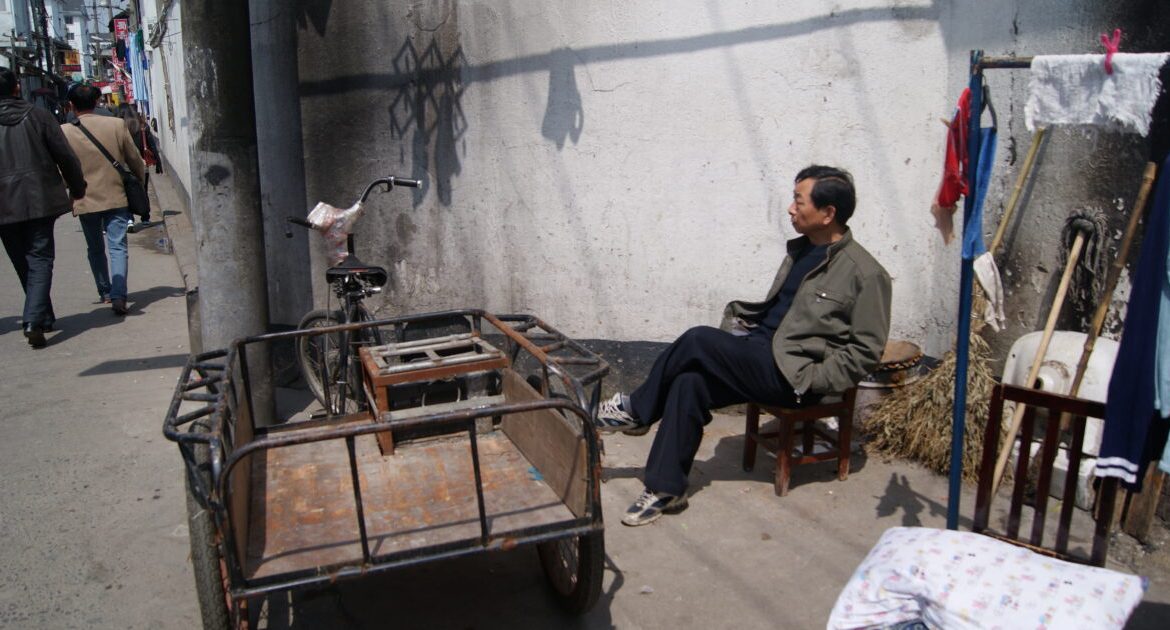
China’s Economic Miracle a Myth: Middle Class Still Poorer Than U.S. Welfare Recipients


China apologists often repeat the Communist Party’s line about the so-called “Chinese Economic Miracle,” claiming that Beijing has “lifted 800 million people out of poverty” as proof that its system is superior to the American one. What they ignore is that it was the Communist Party that first drove some 700 million people into poverty, and it was only the partial adoption of American-style capitalism that allowed them to climb out.
Another oft-cited statistic is that since 2000, average income in China has grown by about 700 percent, compared with only 92 percent in the United States. But the American starting point was far higher. In 1900, average annual income in the U.S. was about $450, while in China it was just $15.
By 2000, the U.S. figure had risen to $41,989, compared with only $959 in China. Today, U.S. average income is $80,610, while China’s stands at just $13,300.
China’s middle class is often estimated at 500 million people, larger than the entire U.S. population. But the definition is misleading. The Chinese government counts anyone earning as little as $7,250 a year as “middle class.” By comparison, in 2024 the average annual disposable income in the United States was about $52,000, or $4,333 per month.
China’s own National Development and Reform Commission reports that 900 million Chinese citizens had a monthly disposable income under $282, and 600 million lived on less than $143.
To qualify for public benefits in the U.S., a single-person household typically must earn $2,510 or less per month before taxes to be eligible for SNAP (food stamps). In fiscal year 2025, the average benefit per person is expected to be $187 per month, or $6.16 per day. This means that nearly all Chinese households would qualify for U.S. food assistance, and that the average food stamp allowance in America is greater than the total disposable income of most Chinese citizens.
Unlike the former Soviet Union, China provides its citizens with very limited socialized benefits. Public schools charge fees, retirement benefits are meager, and healthcare is far from free. Families must shoulder most of the costs themselves, often leaving China’s so-called middle class with less disposable income than U.S. welfare recipients.
In the United States, K–12 education is free. In China, by contrast, education is officially “compulsory” but not free. Government funding covers only part of school expenses, and families must pay tuition fees ranging from about $600 to $2,200 per year. On average, households spend around $1,200 annually on education, which accounts for 17 percent of their total income.
The burden falls heaviest on poor families, who devote 56.8 percent of their income to their children’s schooling, compared with just 10.6 percent among wealthier households.
American retirees earn far more than their Chinese counterparts. The estimated average monthly Social Security retirement benefit for January 2025 is $1,976. In addition, most Americans also draw income from government or company pensions, 401(k)s, or IRAs. The average retirement income for U.S. adults 65 and older is about $75,254 per year, with a median of $54,710. On average, U.S. retirees have a total income of $83,950.
Nearly 92 percent of Americans over 65 receive Social Security, 64 percent receive pensions, 52 percent draw income from investments or rental property, and 26 percent still earn wages through work or self-employment.
By contrast, retirement benefits in China are extremely low and vary by region. Urban workers receive an average monthly pension of about $461. But retirees under the rural and migrant worker plans receive only $14 to $28 per month. Many rural pensioners survive on little more than $20 a month.
Healthcare in China is nominally universal, but citizens still pay heavily. Public health insurance generally covers only about half of medical costs, often less for serious illnesses, leaving patients to shoulder 28 percent of total health expenditures out of pocket. Because state facilities are overcrowded and provide poor quality care, those who can afford it turn to private hospitals or even seek treatment overseas.
China’s private medical sector has exploded over the past decade, becoming one of the country’s largest businesses. From 2011 to 2021, the number of private hospitals grew by 193 percent, and today they outnumber public hospitals two to one. Revenues in the sector reached about $90 billion annually, with a compound annual growth rate of 17 percent between 2016 and 2021, compared to just 9 percent for public hospitals.
The overall healthcare market in China is now the second largest in the world, generating roughly $1.5 trillion in 2021.
Although private hospitals charge two to three times higher rates than public facilities, most people who have the means choose them because the care is far better than the “free” public system.
The reality is that the average Chinese citizen is poor compared to the average American, and Chinese families must pay out-of-pocket for education, healthcare, and retirement. As a result, the gap in disposable income is staggering, with the average American having up to 30 times more. When the numbers are compared, China’s much-touted “economic miracle” looks far less miraculous.
The post China’s Economic Miracle a Myth: Middle Class Still Poorer Than U.S. Welfare Recipients appeared first on The Gateway Pundit.
